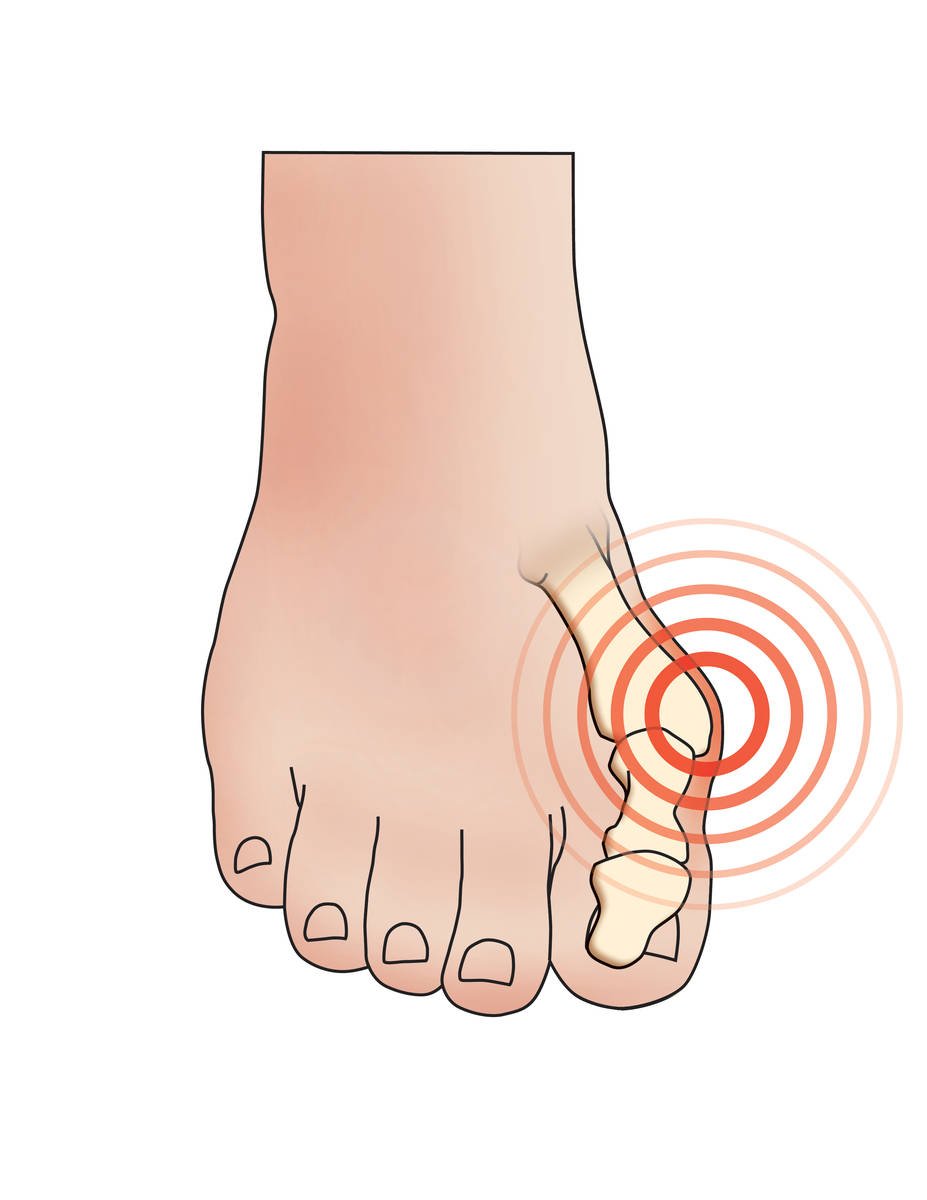Bunions And What To Do About Them
What is a bunion?
A bunion (hallux valgus) is a bony bump on the joint at the base of your big toe that can form when your big toe pushes unevenly against other toes.
When this happens, the joint of your big toe can eventually get bigger and stick out uncomfortably from the side of the foot. The skin over the bunion can appear red in color and be sore and uncomfortable.

Symptoms
Bunion symptoms are the thickening, deformity of the bone and/or inflammation of tissues around the big toe joint, sometimes accompanied by a crooked toe.
Causes
What causes bunions?
Foot bunions can develop from heredity, injury or when stress falls unevenly on joints and tendons in the feet. This imbalance in pressure makes your big toe joint unstable, and can force your foot out of its normal and healthy alignment. Big toe bunions can also be caused by certain types of arthritis, particularly inflammatory types, such as rheumatoid arthritis as well as incorrect footwear.
Prevention
Bunion prevention includes wearing well-fitting shoes that do not cramp your toes, especially in occupations that require a lot of time standing or lifting. Always wear shoes with a wide toe box, giving toes ample space to move and avoid shoes that cramp or irritate your toes.
Treatment
How to fix bunions?
Types of bunion treatment include pads and cushions to protect the sensitive area and/or separate toes that rub. Wider shoes to reduce pressure and friction.
Arch supports to help bring the bones into a more normal alignment, thereby alleviating pressure on the big toe joint.
Lower heel heights help ease foot strain that can increase the formation of bunions. In severe cases, a PediFix® Nighttime Bunion Regulator can be used to help relieve pain while sleeping for patients who want to avoid or postpone surgery
If you have diabetes or poor circulation, consult your health care professional.
Links to recommended PediFix® Products:
- Visco-GEL® Toe Spacers
- Visco-GEL® 'Stay-Put' Toe Spacers™
- Visco-GEL® Bunion Guard™
- Visco-GEL® Dual-Action Bunion Fix
- Visco-GEL® ToeBuddy® Bunion Guard™
- Visco-GEL® Bunion Relief Sleeve





